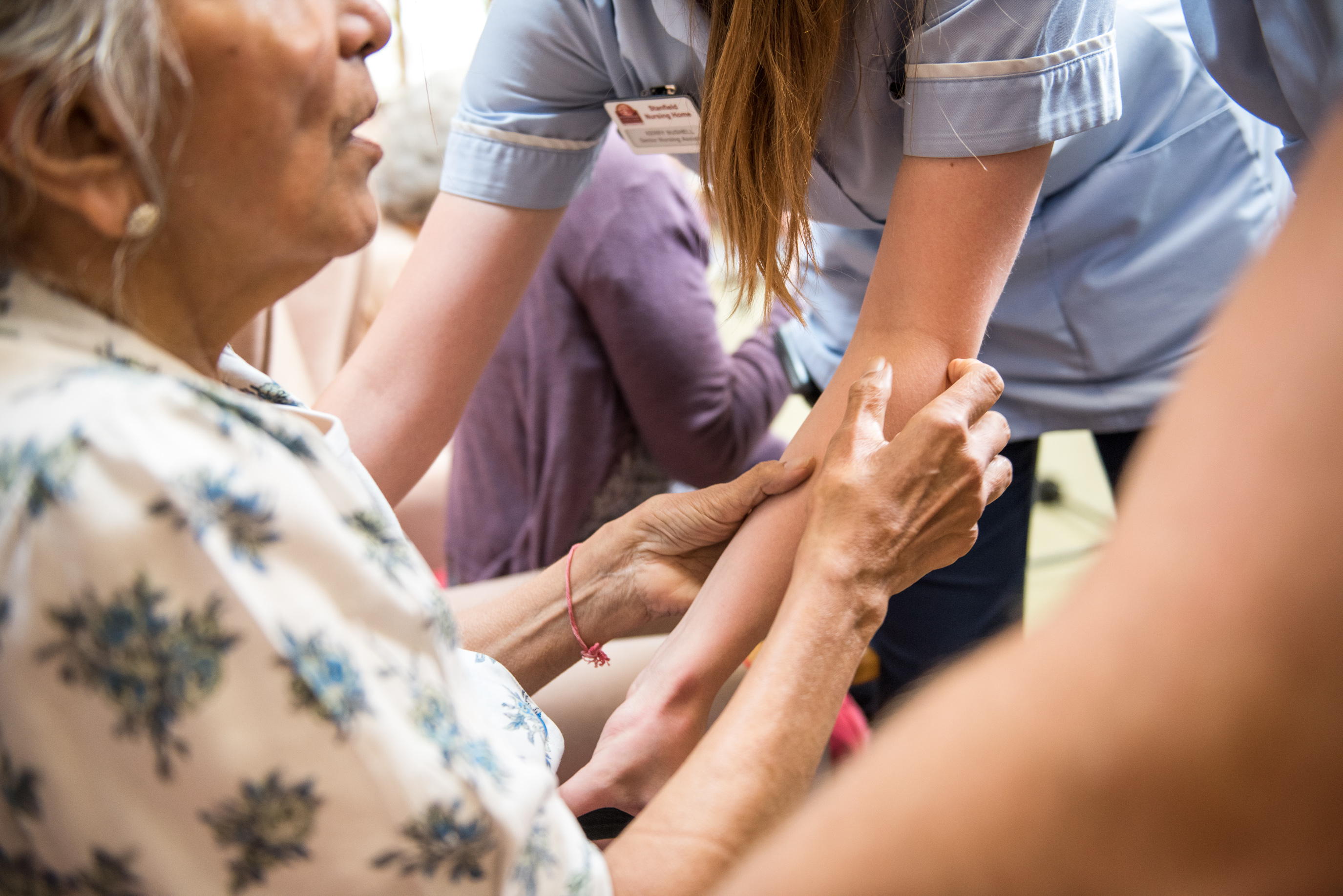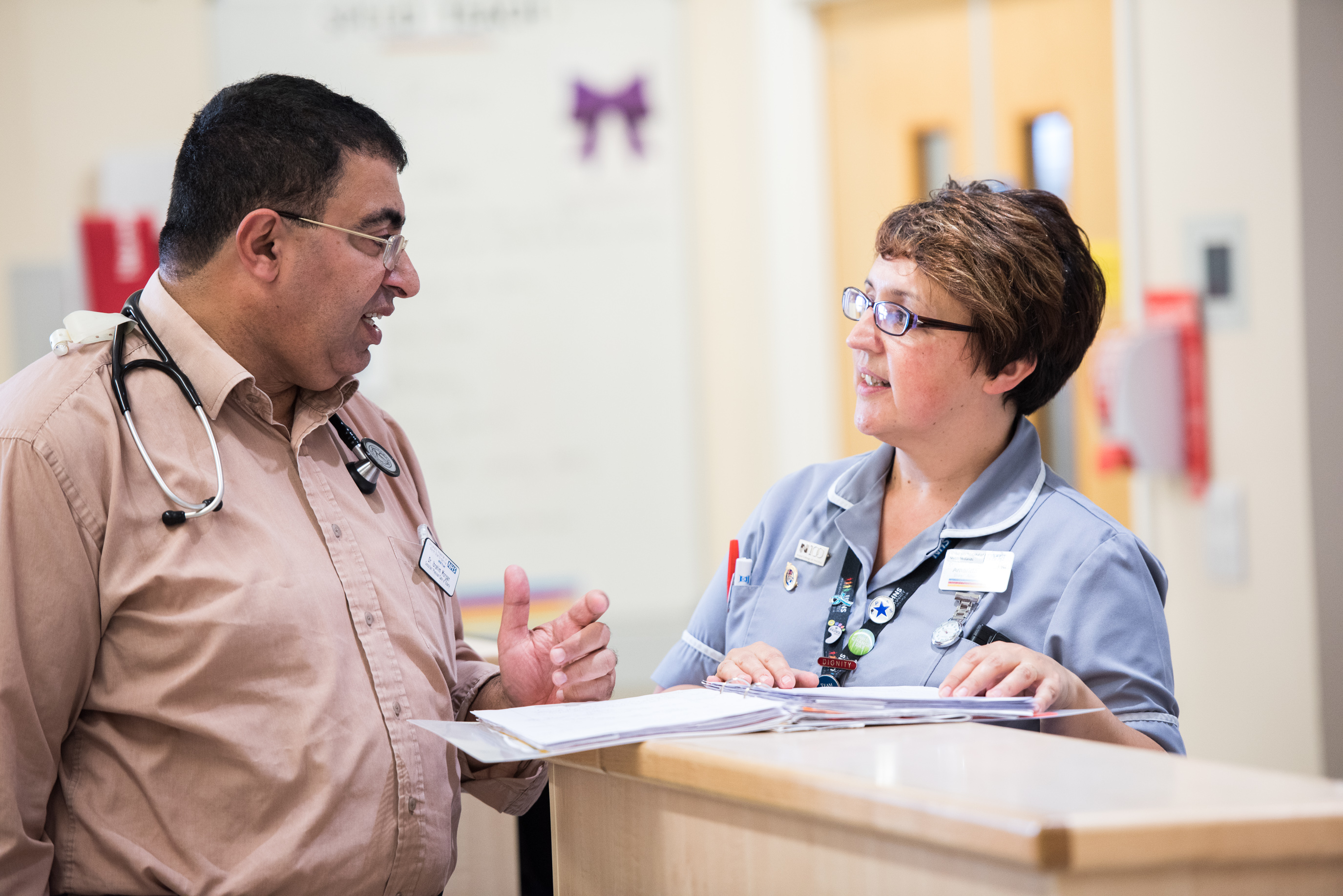This chapter sets out why commissioners must focus on older people and frailty when planning services. It also talks about the role of comprehensive geriatric assessment, the workforce challenge and how the needs of older people are at the heart of our blueprint.

The organisation of health and social care services across the four nations of the UK seems to be forever evolving, with responsibility for commissioning services continuously moving between organisations. In England in particular, new Integrated Care Boards have been charged since July 2022 with the commissioning of health and social care services with a greater focus on service integration and population health.
The population of the UK is ageing with particularly fast growth in the oldest old age groups – by 2045, the number of people aged 85 and above will have almost doubled.6 It is therefore essential that commissioners ensure older people and their health and social care needs are central to the new strategic planning and commissioning processes. Older people are the largest user group of health and social care services. When services work for older people, they are more likely to work for the rest of the population. With this in mind, the primary audience for this document is system leaders and commissioners of health and social care services for older people. We hope that it will help these senior decision-makers to better understand the core features of age-attuned integrated care for older people. We intend to publish an abridged version of this document at a later date for a wider audience of healthcare professionals, patients and system partners.
Why a focus on older people is important
- A social care system in crisis, contributing to older people staying in hospital longer than medically necessary due to the lack of care packages available in the community – this was highlighted through the BGS’s Timely Discharge blog series in 2021.9
- An unprecedented elective care backlog, generating further dependency and increasing demand for social care, rehabilitation, mental health, primary and community services.
- A workforce that is under-resourced, over-stretched and underpaid. While data about the full older people’s healthcare workforce is lacking, we know from analysis of the Royal College of Physicians census that vacancies across geriatric medicine are common.10
- A growing number of older people experiencing fuel poverty and food insecurity.
- Facilities that are not fit for purpose for older people with dementia or a physical disability.
- Lack of interoperable IT and information governance arrangements across providers.

Why frailty matters
In this section we discuss why frailty is such an important issue for the delivery of older people’s healthcare and why all organisations responsible for commissioning health and care services should consider frailty as a priority.
How many people in your community are living with frailty?
How will this number change in the coming years?
Does your system understand the complexity of frailty?
Many people with frailty will have cognitive impairment and dementia and vice versa, increasing the complexity of their care needs. As frailty is often associated with functional impairments, it requires a restorative or enabling approach beyond the scope of a traditional biomedical chronic care model. Older people with frailty often experience five common syndromes:
- Falls (e.g. collapse, legs give way, found lying on the floor)
- Immobility (e.g. sudden change in mobility, ‘gone off legs’, stuck on toilet)
- Delirium (e.g. acute or worsening of pre-existing confusion, or short-term memory loss)
- Incontinence (e.g. new onset or worsening of urinary or faecal incontinence)
- Medication-related harms
Does your system understand the impact of frailty on individuals, families and society?
How well does your system currently manage frailty?
Case studies
The Kent Integrated Dataset (KID)18 links health and social care data for more than two million people. The KID analysis of health and social care spending on people aged over 65 by their level of frailty demonstrates the need for system-wide understanding and action on frailty.
Midlothian Health and Social Care Partnership applied the electronic Frailty Index (eFI) to their population over 65 years and linked this information with patient-level data on use of healthcare services. This resulted in costs for cohorts with different levels of frailty. The observed healthcare costs for over 65s in Midlothian were extrapolated to illustrate Scotland-level costs for older people with different levels of frailty.
Through use of data, both systems were able to show the impact of frailty on spending and proactively identify individuals with mild or moderate frailty whose condition could be reversed.
What steps is your system taking to prevent and reverse frailty?
Preventing frailty also improves brain health – modifiable risk factors for frailty are also risk factors for dementia so a health promotion and preventative approach will impact on both conditions.19
Frailty is potentially reversible, especially in its earlier stages, and can be managed well by comprehensive assessment and tailored interventions, rehabilitation, care and support.20 In addition to the direct benefits for older people and their carers, families and communities also benefit as preventing or delaying frailty and disability improves wellbeing and participation.
Recommendation 2: Appoint a senior officer or non-executive Board member with a specific role to seek ongoing assurance on the quality of health and social care for older people and their carers.
Recommendation 3: Publish baseline, then annual, State of Ageing reports on system-wide outcome indicators related to care for older people including feedback from patients and carers to reflect their experience.

The role of Comprehensive Geriatric Assessment
One of the cornerstones of older people’s healthcare, with a strong evidence base, is the assessment and management process known as Comprehensive Geriatric Assessment (CGA). This multidimensional approach that includes physical, cognitive, functional, social and psychological components, is the gold standard, most evidence-based method to prevent and manage frailty syndromes and their complications using interventions tailored to the needs of the individual.22
Integrated care for frailty
A systematic review by the European Joint Action Advantage concluded integrated care for frailty requires effective chronic care, timely acute care, plus enablement and rehabilitation to optimise functional ability, particularly at times of a deterioration in health, or when moving between home, hospital or care home.33 This review informed the integrated model of care and support to prevent and manage frailty developed by 22 European countries between 2017 and 2019.34
- Screening to identify individuals with, or at risk of, frailty;
- CGA and personalised care and support planning in all care settings;
- Tailored interventions such as exercise (particularly strength and balance training), adequate nutrition, and structured medications reviews to optimise appropriate polypharmacy;
- Reablement, rehabilitation and intermediate care to promote independence and recovery at times of transition from hospital and after illness;
- Advance care planning that considers treatment escalation plans and preferences for end of life care;
- Provision of equipment, adaptations and assistive technologies.
- Engage and empower people and communities
- Support the coordination of services delivered by multidisciplinary providers
- Orient services towards community-based care
- Strengthen governance and accountability systems
- Enable system-strengthening
Population approaches for frailty in the UK
Commissioning services for older people starts with understanding the assets in local communities and the needs of the local population. Stratifying the population into groups with different levels of complexity helps to target interventions and resources to where they will have most impact.
- Fit - a population-level approach with information and advice on active and healthy ageing
- Mildly frail - as above plus personalised self-management information, advice and support
- Moderately frail - as above plus holistic care and support planning, structured medication review plus CGA by a multidisciplinary team
- Severely frail - as above plus case management and palliative/end of life care.
Case studies
This tiered approach to frailty has been adopted by Staffordshire and Stoke on Trent ICS. Their Healthy Ageing and Managing Frailty in Older Age strategy39 aims to improve healthy life expectancy and reduce health inequalities for older people in the area. It describes ambitions to develop new models of holistic care and a radically different workforce model with the right capacity to meet the changing patterns of illness as a result of population ageing.
One Devon’s population health management strategy for older people builds on a locally commissioned enhanced service for West Devon and on evidence from the Pathfields model.40 Use of this tool identified more patients living with frailty than use of the eFI alone and enabled more patients to receive earlier interventions.
Frimley ICS identified frailty as a priority and established a whole-system Frailty Advisory Board to drive an integrated approach to frailty within their localities. The group identified areas for improvement by benchmarking against the Right Care Frailty Toolkit.41
This approach to identifying frailty has helped systems to prioritise resources in their areas and may be particularly effective in areas with a high proportion of older people such as coastal communities and towns with many care homes.

Building workforce capacity and capability
Older people and their carers require timely access to a wide range of generalist and specialist care and support delivered by primary care, community services, acute care, social care, housing, community and voluntary partners as well as specialist palliative care services.
Upskilling the workforce
The Skills for Health Frailty Core Capabilities Framework43 provides a single, consistent and comprehensive framework on which to base staff development. The framework builds on, and cross-references, other core skills frameworks for dementia, end of life care and person-centred approaches.
- Tier 1: Those that require general awareness of frailty
- Tier 2: Health, social care and others who regularly work with people living with frailty
- Tier 3: Health, social care and other professionals who provide expert care and lead services for people living with frailty.
Case studies
Frimley ICS has introduced:
- A system-wide e-learning package, based on Frailty Core Capabilities Framework (tier 1)
- Frailty training for ICT staff.
- An in-house degree module through University of West London (tier 3) run annually.
Future plans include developing a Tier 2 frailty training package for health and social care staff who regularly work with people living with frailty.
Dorset HealthCare’s online frailty module provides a basic level of information to increase the knowledge of all staff who come into contact with people who may have frailty. GP practices are encouraged to promote completion of this module by all reception/admin and clinical staff to help develop practice based and locality level support to identify people who have mild frailty.
Maximising the workforce
Investment to develop the right current and future workforce capacity needs to be matched by support to build effective interdisciplinary teams if we are to make the best possible use of scarce resources.
Recommendation 6: Develop an integrated Workforce Plan to build adequate specialist and generalist multidisciplinary capacity and skill mix to care for older people with complex needs.
Recommendation 7: Protect and preserve the right to rehabilitation for all older people who need it, in line with the principles outlined by the Community Rehabilitation Alliance.48

Older people at the heart of our blueprint
The complex needs of older people are at the heart of our Blueprint. Older people are living longer than ever before. This is a triumph and should be celebrated as it reflects advances in medicine and healthier lifestyles throughout the life course. However, for many people, this also means more years spent in ill-health and increased numbers of people with frailty and multimorbidity.
Recommendation 9: Engage and involve older people, carers and communities as equal partners with health and social care professionals in co-design, delivery and monitoring the impact of these services and support.
Recommendation 10: Provide support to enable the lived experience of older people and carers, including those with dementia and mobility, sensory or communication needs, to inform ongoing quality improvement and assurance.
What matters to older people
The I’m Still Me5 narrative provided valuable insight into what older people want to see from health and social care. A more recent survey conducted by Yorkshire & Humber’s Older People with Frailty Applied Research Collaboration identified the top priorities of older people living with moderate or severe frailty.57
- Staying in my own home - living in my own home for as long as I can, with support if I need it.
- Staying independent - being able to undertake daily and social activities.
- Making decisions with family or friends, carers and health professionals about any care or support I might need in the future.
- Having more joined-up care.
- Health and care professionals having a better understanding of the experiences and needs of older people.
- Having a better understanding of my physical or mental health conditions(s) and symptoms.
- Having more information about my physical or mental health condition(s) and what I can do to manage my symptoms.
- Worrying less about falling.
- Doing more exercise/physical activity.
- Having better support for vision loss or impaired vision.
- Having a range of housing choices, where help is provided if I need it.
